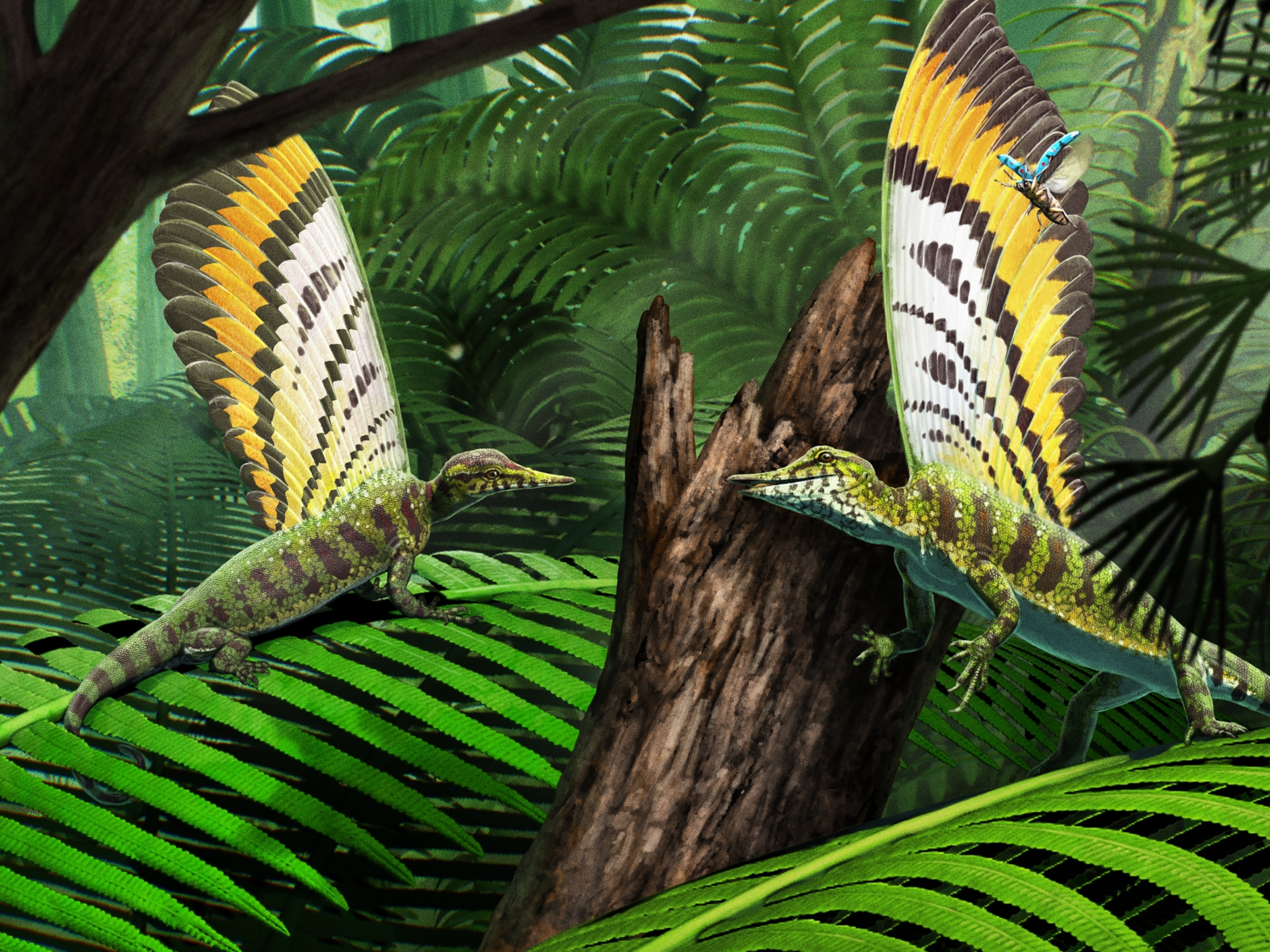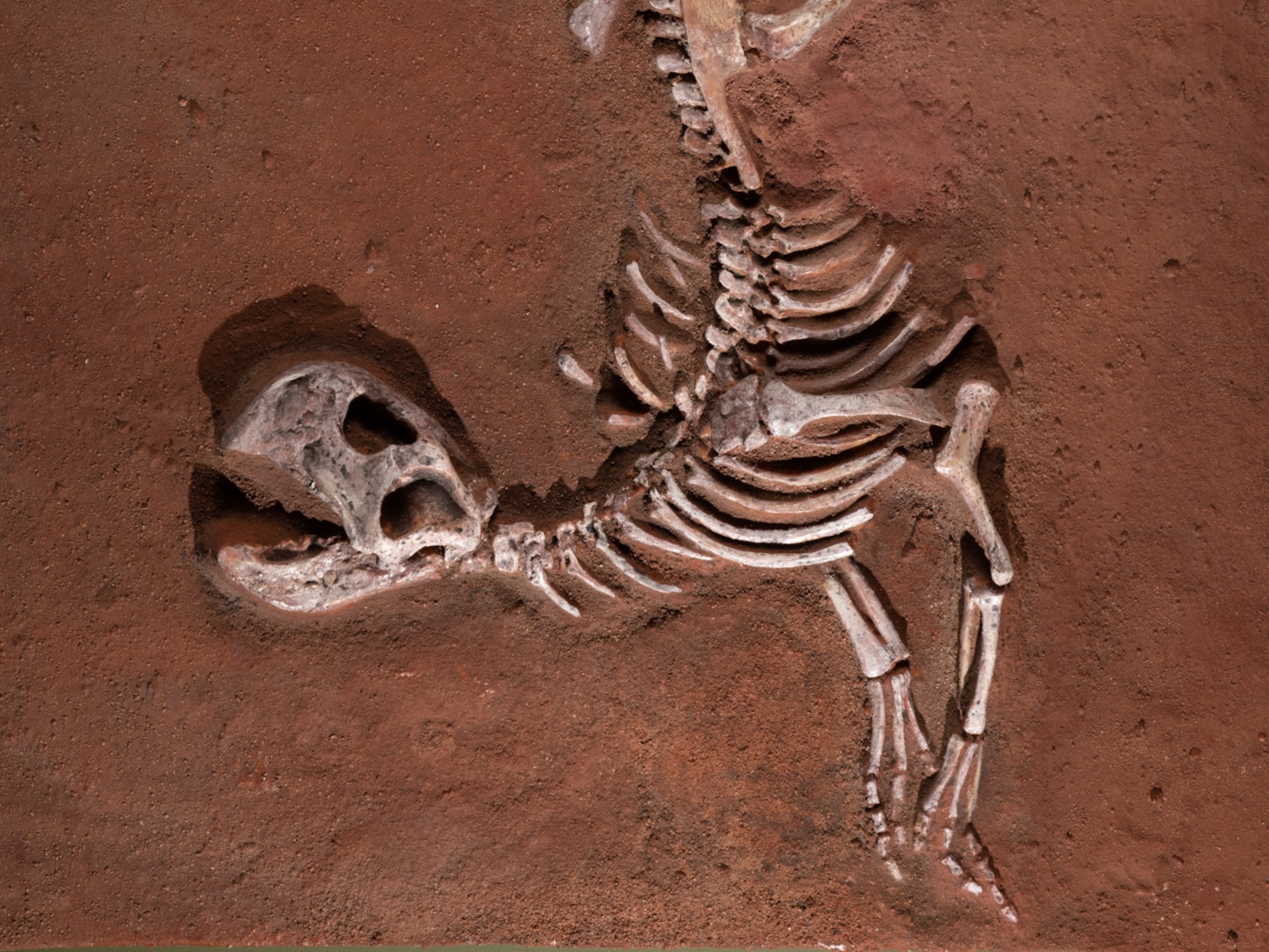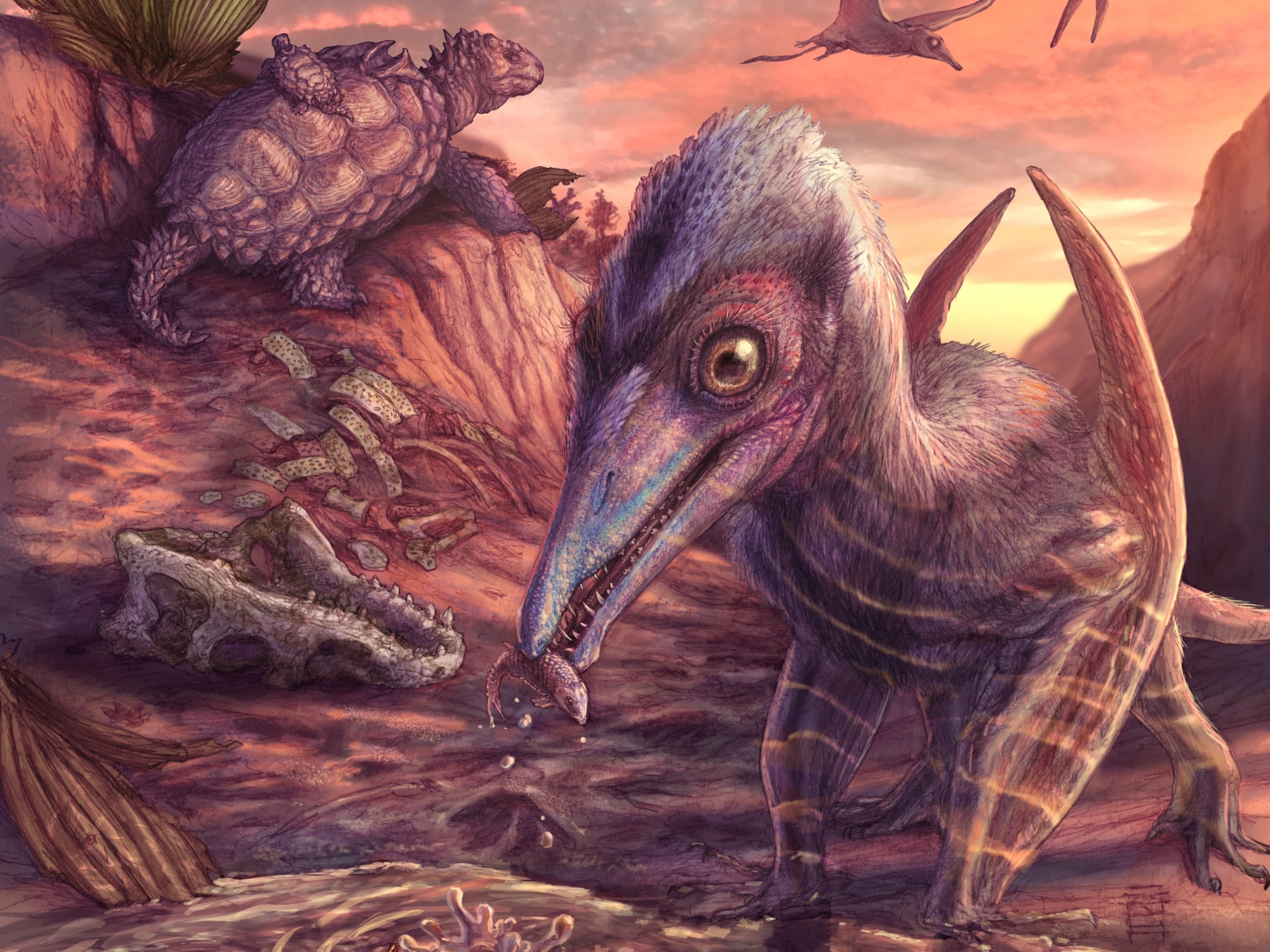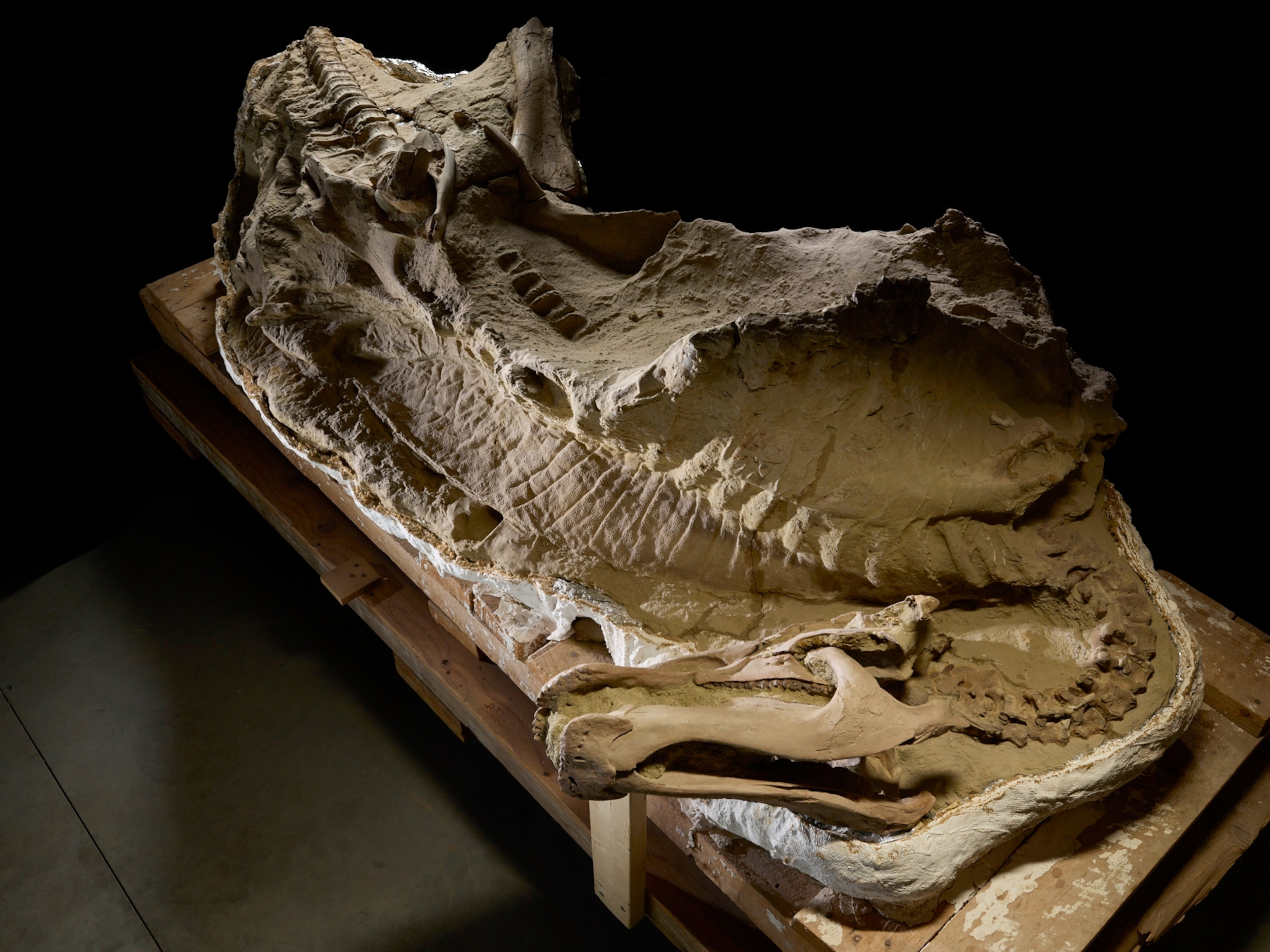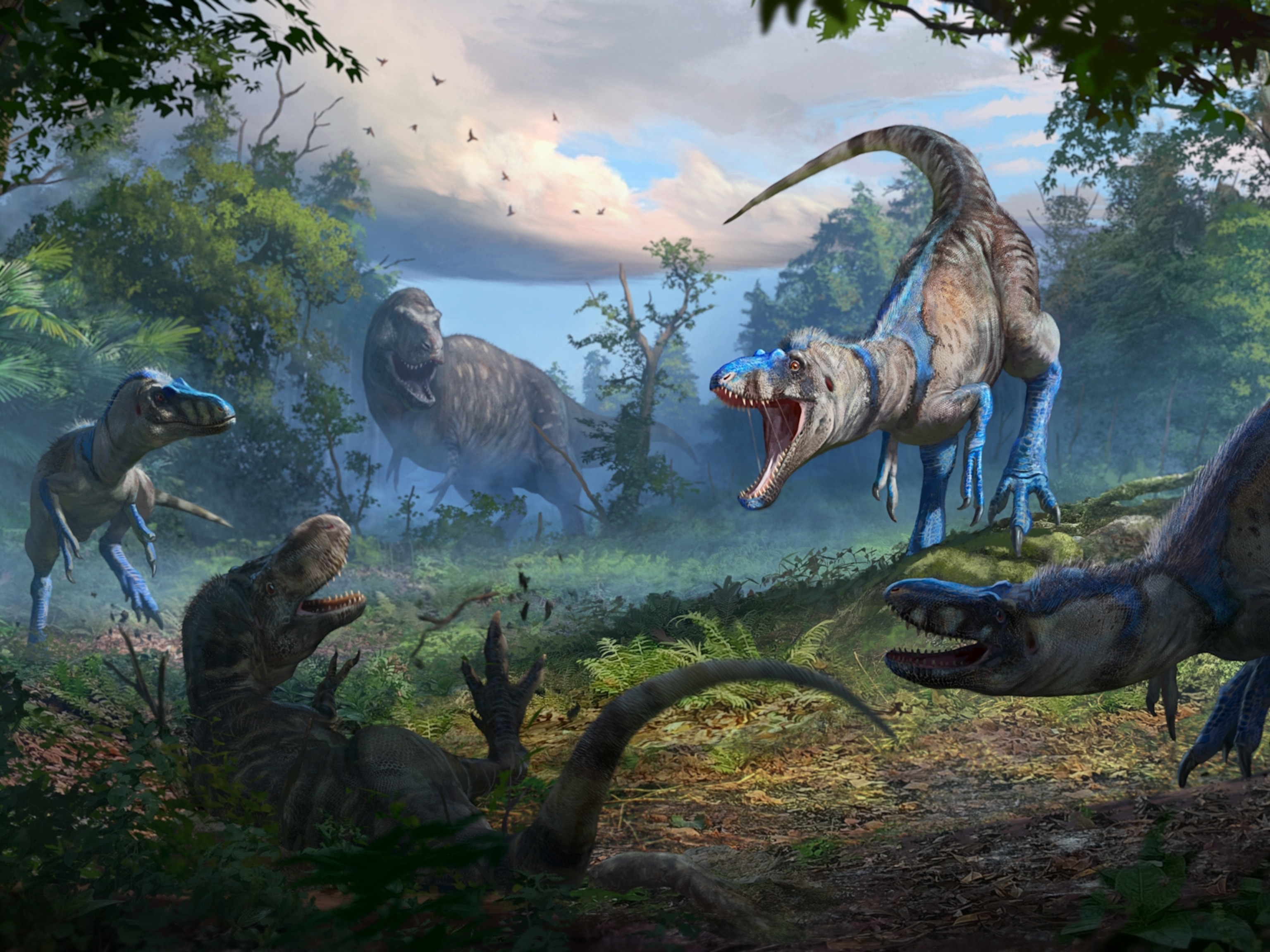
Ancient Flying Reptile Ate Like a Toothy Pelican
120-million-year-old fossils seemed to sport a throat pouch for skimming fish from the water.
Long before pelicans, ancient flying reptiles may have skimmed over lakes, scooping and storing fish in a throat pouch, paleontologists report. The newly discovered pterosaur species lived some 120 million years ago in China.
Dubbed Ikrandraco avatar, the pterosaur sported an unusual crest under its chin, which may have supported a pouch. As reported in the journal Scientific Reports on Thursday, the species name comes from a fictional flying creature called an Ikran, portrayed with a similar chin crest in the 2009 movie Avatar.
"Many pterosaurs bear crests on their skull, some quite large and bizarre," says study senior author Alexander Kellner of Brazil's Universidade Federal do Rio de Janeiro. However, this is the first reported finding of a pterosaur with a crest on the lower jaw and none on the skull.
Pelicans and other modern birds with throat pouches are descended from dinosaurs, not pterosaurs, which were reptiles. Both Ikrandraco and pelicans may have separately evolved pouches and skimming flight, says study lead author Xiaolin Wang of the Chinese Academy of Sciences in Beijing.
Called convergent evolution, this process explains why many unrelated creatures have similar characteristics, sometimes picked up millions of years apart, because they are advantageous. Wang suggests that pterosaurs evolved throat pouches when faced with fish ripe for the picking, just as the ancestors of pelicans did.
Fly Like a Pelican?
Overall, Ikrandraco was about 30 inches long (75 centimeters) and armed with a toothed skull about 11 inches (28 centimeters) long.
The pterosaur had at least 40 pairs of small teeth, each a bit under half an inch (one centimeter) long. The lower jaw bore a crest about 5 inches (13 centimeters) long, larger than that of any other flying reptile, Kellner says. The fossils of two nearly complete pterosaurs were found in bone beds more than 12 miles (20 kilometers) apart in northern China.

Most intriguing, the chin crest had a hooked ending, which the discovery team suggests was an attachment for a throat pouch.The pouch would have started at the back of the crest and would have been attached to the mid-chest of the pterosaur.
"It is hard to say if all pterosaurs are good fliers, but this new pterosaur must be a good flier," says Wang, pointing to long wings and well-developed flight muscles of the two Ikrandraco fossils reported in the study. And it must have been a good flier to skim for food, he says.
"Unlikely and Bizarre"
Even so, some pterosaur experts were skeptical of the skimming flight idea.
"These are spectacular new fossil specimens," says paleontologist Richard Butler of the United Kingdom's University of Birmingham, who was not part of the new study. He says the find points to amazing diversity among flying reptiles in China during the age of dinosaurs.
But while the throat pouches seem possible, if "speculative," for Ikrandraco, Butler says that a 2007 PLOS Biology analysis concluded that feeding by skimming was probably impossible for pterosaurs.
"The proposed feeding strategy sounds unlikely and bizarre to me," says pterosaur expert Mark Witton of the University of Portsmouth in England.
Trawling a chin crest in the water would slow a pterosaur down and bring it perilously close to the water, where glare from sunlight reduces prey visibility, Witton says. "Modern animals show us that flying relatively low over the water to catch prey is a successful ecological strategy, but they do this without any bizarre crest trawling."
Kellner acknowledges the skimming idea is "controversial," but says that an upcoming reanalysis of pterosaur flight dynamics by his team shows that skimming was easier than the 2007 study suggests.
"Regarding Ikrandraco, it would be a 'limited' skimmer," Kellner adds by email. "But this is the best explanation for such a deep crest limited to the lower jaw."
Ikrandraco matched pelicans in awkwardness on land, Wang notes. "Pterosaurs are highly specialized, and their forelimbs are strong and elongate, while the hind limbs are weak," he says. "Hence, when they were on the ground, they must [have been] ungainly."
Follow Dan Vergano on Twitter.
